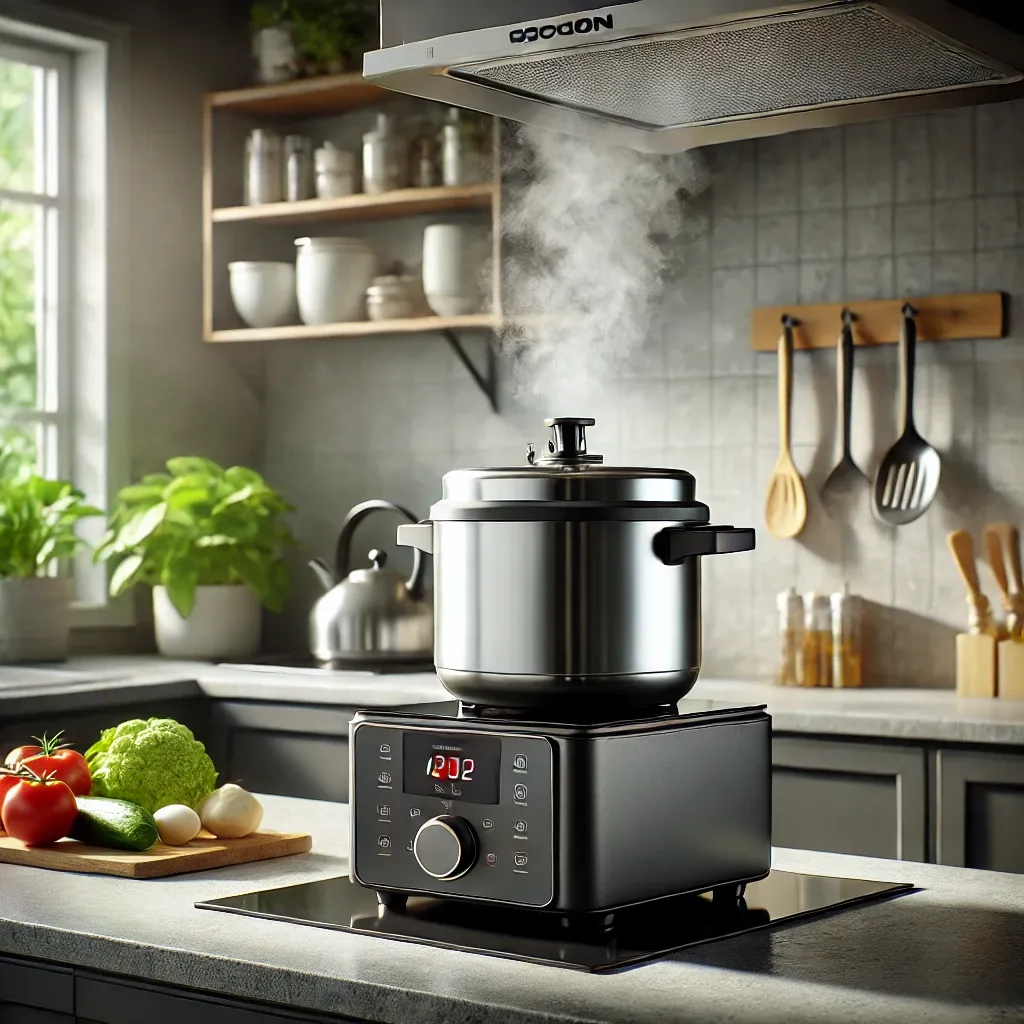What’s the secret to perfectly fluffy rice every time? Have you ever wondered how pressure and induction cooking combine for faster, tastier results? If you’re curious about the science—and simplicity—behind pressure cooker rice on an induction stove, this post is for you. Discover the top benefits, insider tips, and real-world performance of this modern kitchen solution. Keep reading to uncover everything you need to know about pressure rice cooker induction technology.
Pressure rice cooker rice induction
Cooking rice may seem simple, but getting it just right is a craft—and modern kitchen tech has taken it to a whole new level. Combining pressure cooking with induction heating unlocks the ability to produce consistently perfect rice, fast and efficiently. But how exactly does this work?
Let’s break down the key advantages of pressure rice cooker rice induction
-
Even heat distribution with induction coils
-
Faster cooking times due to pressure build-up
-
Energy efficiency with precise temperature control
-
Retained nutrients and enhanced flavor
-
Minimal supervision and automation
-
Smart settings for different rice types
-
Safe cooking with multiple protection systems
-
Moisture locking for fluffier texture
-
Easy cleaning with detachable lids and non-stick interiors
-
Compact and sleek design for modern kitchens
From my own experience using a Cuckoo induction pressure rice cooker, I can tell you the change was night and day. What used to take 30 minutes on a regular stovetop now takes just 15—and the rice tastes as if it came from a high-end Korean restaurant. It’s fragrant, perfectly sticky, and evenly cooked from top to bottom.
The science behind it is straightforward: induction heating uses electromagnetic fields to heat the entire cooking pot evenly and instantly, while pressure cooking traps steam and increases the boiling point, allowing rice to cook more quickly and absorb flavors more deeply.
For example, cooking brown rice the traditional way might take up to 50 minutes, but in an induction pressure cooker, I’ve consistently finished it in just 25 minutes—with no need to check or stir. The sealed environment also means no burning or sticking at the bottom.
Beyond convenience, this method retains more nutrients. Since the lid stays tightly sealed during cooking, essential minerals like magnesium and iron don’t escape. This is especially beneficial for those trying to stick to healthier, whole-grain options.
Whether you’re meal prepping or feeding a family, this combo of tech makes a huge difference in time, quality, and taste.
👉”Learn more about pressure rice cooker rice induction”👈
Induction pressure cooker rice
If you’re someone who values both taste and time, induction pressure cooker rice might be the kitchen upgrade you didn’t know you needed. But what makes induction-powered pressure cookers different from conventional electric rice cookers?
Here are the standout features of induction pressure cookers when making rice:
-
3D heating system that reduces cold spots
-
High-speed heat transfer for rapid boiling
-
Auto-adjustments for water level and grain type
-
Silent, energy-saving operation
-
Precision sensors for optimal texture
-
Programmable delay and keep-warm functions
-
Safe steam release mechanisms
-
Durable, long-lasting inner pots
-
Multifunction modes for porridge, quinoa, and more
-
Enhanced aroma infusion through pressure
When I first tried cooking jasmine rice in my induction pressure cooker, I was skeptical. I’d heard these machines could be loud or hard to control, but I was wrong. The unit stayed quiet, and the rice was incredibly fragrant—just like street food in Bangkok.
Induction technology works by generating heat directly in the cookware, not from an external coil. That means your rice isn’t just being cooked from the bottom, but from all sides. Add pressure into the equation, and you have rice that’s tender, uniform, and packed with flavor—without any overcooked or undercooked zones.
For example, one of my go-to recipes is a one-pot chicken rice. Using the induction pressure mode, I can cook the rice and chicken together in 20 minutes. The pressure ensures the chicken stays juicy, while the rice absorbs all the savory juices. It’s both a time-saver and a flavor booster.
These cookers also offer versatility. I’ve used mine to cook steel-cut oats, barley, and even sushi rice, with great results each time. The smart sensors take the guesswork out, adjusting cook time and pressure based on the grain type and moisture level.
So whether you’re a busy professional or just love good food, the induction pressure method truly upgrades your rice game.
👉”Explore top induction pressure cookers”👈
Pressure cooker rice induction
Let’s flip the lens now and explore how pressure cooker rice induction benefits different lifestyles and cooking habits. Whether you’re a student, a working parent, or a home chef, this cooking method is all about adaptability.
Here are key reasons why this setup fits seamlessly into everyday routines:
-
Quick weekday meal prep
-
Hands-free cooking—just set and forget
-
Safe for beginner cooks
-
Ideal for small or shared kitchens
-
Customizable doneness settings
-
Minimal cleanup with fewer dishes
-
Reliable results every single time
-
Supports healthy eating with whole grains
-
Multi-functional: cook soups, stews, and rice dishes
-
Budget-friendly in the long term
Back in college, I shared a tiny apartment with two friends. We didn’t have an oven, and our stovetop was unpredictable. Getting a pressure cooker with induction compatibility was a lifesaver. Not only did it cook rice to perfection, but we started making all kinds of dishes—stews, ramen, even steamed buns.
This flexibility comes from how modern induction pressure cookers are designed. They’re not just rice machines; they’re mini kitchens. With pre-set modes for everything from GABA rice to porridge, it’s easy to experiment without messing up the ratios or textures.
Plus, the “set it and forget it” approach has saved me countless times on busy days. I just load the ingredients in the morning, press the button, and come back to a warm, home-cooked meal.
Another underrated benefit? Cleaning up is ridiculously simple. The non-stick pot lifts out easily, and many models have self-cleaning steam modes. That means fewer pots to scrub and more time to enjoy your meal—or unwind.
Whether you’re a culinary newbie or someone looking to simplify weeknight dinners, a pressure cooker built for induction is a tool worth investing in.
👉”Find pressure cooker rice induction reviews”👈
In conclusion, the combination of pressure cooking and induction heating isn’t just a kitchen fad—it’s a game-changer. You get better-tasting rice, healthier meals, faster prep times, and a more relaxed cooking experience. As famed chef James Beard once said, “Good bread is the most fundamentally satisfying of all foods; and good bread with fresh butter, the greatest of feasts.” The same can be said for rice—especially when it’s made right.
So whether you’re upgrading your appliance game or just want to eat better with less effort, the pressure cooker rice induction method delivers—and then some.






